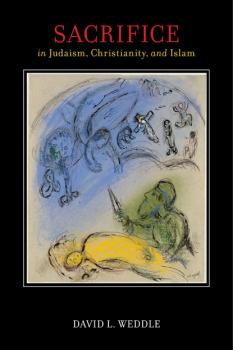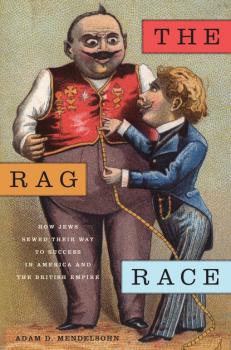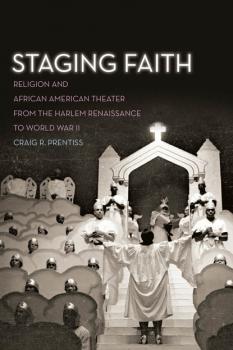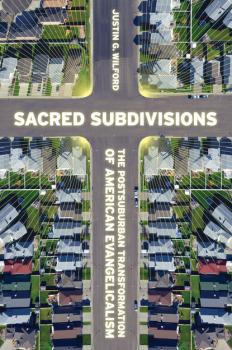ТОП просматриваемых книг сайта:















Зарубежная эзотерическая и религиозная литература
Различные книги в жанре Зарубежная эзотерическая и религиозная литература, доступные для чтения и скачиванияАннотация
As we enter the 21st century, it becomes increasingly difficult to envisage a world detached from religion or an anthropology blind to its study. Yet, how people become religious is still poorly studied. This volume gathers some of the most distinguished scholars in the field to offer a new perspective for the study of religion, one that examines the works of transmission and innovation through the prism of learning. They argue that religious culture is socially and dynamically constructed by agents who are not mere passive recipients but engaged in active learning processes. Finding a middle way between the social and the cognitive, they see learning religions not as a mechanism of “downloading” but also as a social process with its relational dimension.
Информация о книге
Автор произведения Группа авторов
Аннотация
Информация о книге
Автор произведения David L. Weddle
Аннотация
Illuminates how African Muslims drew on Islam while enslaved, and how their faith ultimately played a role in the African Disapora Servants of Allah presents a history of African Muslims, following them from West Africa to the Americas. Although many assume that what Muslim faith they brought with them to the Americas was quickly absorbed into the new Christian milieu, as Sylviane A. Diouf demonstrates in this meticulously-researched, groundbreaking volume, Islam flourished during slavery on a large scale. She details how, even while enslaved, many Muslims managed to follow most of the precepts of their religion. Literate, urban, and well-traveled, they drew on their organization, solidarity and the strength of their beliefs to play a major part in the most well-known slave uprisings. But for all their accomplishments and contributions to the history and cultures of the African Diaspora, the Muslims have been largely ignored. Servants of Allah—a Choice 1999 Outstanding Academic Title—illuminates the role of Islam in the lives of both individual practitioners and communities, and shows that though the religion did not survive in the Americas in its orthodox form, its mark can be found in certain religions, traditions, and artistic creations of people of African descent. This 15th anniversary edition has been updated to include new materials and analysis, a review of developments in the field, prospects for new research, and new illustrations.
Информация о книге
Автор произведения Sylviane A. Diouf
Аннотация
"Sylvan's thesis furnishes far more of the same valued experiences than is usually realized: ritual activity, communal ceremony, a philosophy and worldview, a code for living one's life, a cultural identity, a social structure, a sense of belonging, and crucially, Sylvan argues encounters with the numinous."— Journal of Religion Most studies of the religious significance of popular music focus on music lyrics, offering little insight into the religious aspects of the music itself. Traces of the Spirit examines the religious dimensions of popular music subcultures, charting the influence and religious aspects of popular music in mainstream culture today and analyzing the religious significance of the audience's experiences, rituals, and worldviews. Sylvan contends that popular music subcultures serve the function of religious communities and represent a new and significant religious phenomenon. Drawing on ethnographic fieldwork using interviews and participant observation, Sylvan examines such subcultures as the Deadheads, raves and their participants, metalheads, and Hip Hop culture. Based on these case studies, he offers a comprehensive theoretical framework in which to study music and popular culture. In addition, he traces the history of West African possession religion from Africa to the diaspora to its integration into American popular music in such genres as the blues, rock and roll, and contemporary musical youth subcultures.
Информация о книге
Автор произведения Robin Sylvan
Аннотация
For centuries, Jews have been known as the «people of the book.» It is commonly thought that Judaism in the first several centuries CE found meaning exclusively in textual sources. But there is another approach to meaning to be found in ancient Judaism, one that sees it in the natural world and derives it from visual clues rather than textual ones. According to this conception, God embedded hidden signs in the world that could be read by human beings and interpreted according to complex systems. In exploring the diverse functions of signs outside of the realm of the written word, Swartz introduces unfamiliar sources and motifs from the formative age of Judaism, including magical and divination texts and new interpretations of legends and midrashim from classical rabbinic literature. He shows us how ancient Jews perceived these signs and read them, elaborating on their use of divination, symbolic interpretation of physical features and dress, and interpretations of historical events. As we learn how these ancient people read the world, we begin to see how ancient people found meaning in unexpected ways.
Информация о книге
Автор произведения Michael D. Swartz
Аннотация
Winner, 2015 Book Prize from the Southern Jewish Historical Society [/b] Finalist, 2015 Jordan Schnitzer Book Award from the Association for Jewish Studies Winner, 2014 National Jewish Book Award in American Jewish Studies from the Jewish Book Council [b] The majority of Jewish immigrants who made their way to the United States between 1820 and 1924 arrived nearly penniless; yet today their descendants stand out as exceptionally successful. How can we explain their dramatic economic ascent? Have Jews been successful because of cultural factors distinct to them as a group, or because of the particular circumstances that they encountered in America? The Rag Race argues that the Jews who flocked to the United States during the age of mass migration were aided appreciably by their association with a particular corner of the American economy: the rag trade. From humble beginnings, Jews rode the coattails of the clothing trade from the margins of economic life to a position of unusual promise and prominence, shaping both their societal status and the clothing industry as a whole. Comparing the history of Jewish participation within the clothing trade in the United States with that of Jews in the same business in England, The Rag Race demonstrates that differences within the garment industry on either side of the Atlantic contributed to a very real divergence in social and economic outcomes for Jews in each setting.
Информация о книге
Автор произведения Adam D. Mendelsohn
Аннотация
In The New American Zionism, Theodore Sasson challenges the conventional view of waning American Jewish support for Israel. Instead, he shows that we are in the midst of a shift from a «mobilization» approach, which first emerged with the new state and focused on supporting Israel through big, centralized organizations, to an «engagement» approach marked by direct and personal relations with the Jewish state. Today, growing numbers of American Jews travel to Israel, consume Israeli news and culture, and focus their philanthropy and lobbying in line with their personal political viewpoints. As a result, American Jews find Israel more personally meaningful than ever before. Yet, at the same time, their ability to impact policy has diminished as they no longer speak with a unified voice.
Информация о книге
Автор произведения Theodore Sasson
Аннотация
Over fifty years ago, Will Herberg theorized that future immigrants to the United States would no longer identify themselves through their races or ethnicities, or through the languages and cultures of their home countries. Rather, modern immigrants would base their identities on their religions. The landscape of U.S. immigration has changed dramatically since Herberg first published his theory. Most of today’s immigrants are Asian or Latino, and are thus unable to shed their racial and ethnic identities as rapidly as the Europeans about whom Herberg wrote. And rather than a flexible, labor-based economy hungry for more workers, today’s immigrants find themselves in a post-industrial segmented economy that allows little in the way of class mobility. In this comprehensive anthology contributors draw on ethnography and in-depth interviews to examine the experiences of the new second generation: the children of Asian and Latino immigrants. Covering a diversity of second-generation religious communities including Christians, Hindus, Buddhists, Muslims, and Jews, the contributors highlight the ways in which race, ethnicity, and religion intersect for new Americans. As the new second generation of Latinos and Asian Americans comes of age, they will not only shape American race relations, but also the face of American religion.
Информация о книге
Автор произведения Группа авторов
Аннотация
In the years between the Harlem Renaissance and World War II, African American playwrights gave birth to a vital black theater movement in the U.S. It was a movement overwhelmingly concerned with the role of religion in black identity. In a time of profound social transformation fueled by a massive migration from the rural south to the urban‑industrial centers of the north, scripts penned by dozens of black playwrights reflected cultural tensions, often rooted in class, that revealed competing conceptions of religion's role in the formation of racial identity. Black playwrights pointed in quite different ways toward approaches to church, scripture, belief, and ritual that they deemed beneficial to the advancement of the race. Their plays were important not only in mirroring theological reflection of the time, but in helping to shape African American thought about religion in black communities. The religious themes of these plays were in effect arguments about the place of religion in African American lives. In Staging Faith, Craig R. Prentiss illuminates the creative strategies playwrights used to grapple with religion. With a lively and engaging style, the volume brings long forgotten plays to life as it chronicles the cultural and religious fissures that marked early twentieth century African American society. Craig R. Prentiss is Professor of Religious Studies at Rockhurst University in Kansas City, Missouri. He is the editor of Religion and the Creation of Race and Ethnicity: An Introduction (New York University Press, 2003).
Информация о книге
Автор произведения Craig R. Prentiss
Аннотация
In an era where church attendance has reached an all-timelow, recent polling has shown that Americans are becomingless formally religious and more promiscuous in their religiouscommitments. Within both mainline and evangelicalChristianity in America, it is common to hear of secularizingpressures and increasing competition from nonreligioussources. Yet there is a kind of religious institution that hasenjoyed great popularity over the past thirty years: the evangelicalmegachurch. Evangelical megachurches not onlycontinue to grow in number, but also in cultural, political,and economic influence. To appreciate their appeal is tounderstand not only how they are innovating, but more crucially,where their innovation is taking place. In this groundbreaking and interdisciplinary study, Justin G.Wilford argues that the success of the megachurch is hingedupon its use of space: its location on the postsuburban fringeof large cities, its fragmented, dispersed structure, and itsfocus on individualized spaces of intimacy such as smallgroup meetings in homes, which help to interpret suburbanlife as religiously meaningful and create a sense of belonging.Based on original fieldwork at Rick Warren’s SaddlebackChurch, one of the largest and most influential megachurchesin America, Sacred Subdivisions explains how evangelicalmegachurches thrive by transforming mundane secularspaces into arenas of religious significance.
Информация о книге
Автор произведения Justin Wilford










